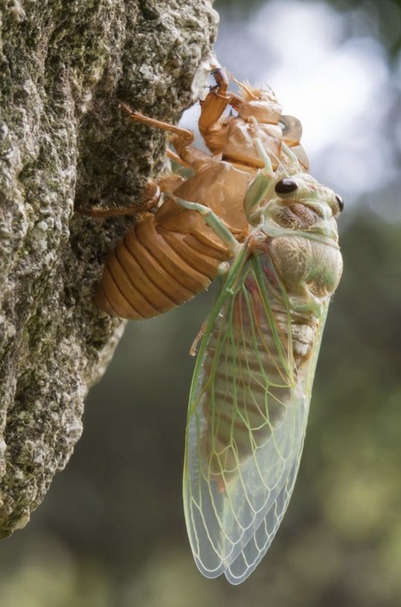Cicadas: the sound of summer, the soul of nature
Cicadas are a type of insect that belong to the order Hemiptera and the family Cicadidae. There are over 3,000 species of cicadas found around the world, with the majority of them living in tropical and subtropical regions. These fascinating insects have captured the attention of humans for centuries, and their unique life cycle and singing behavior make them a favorite among nature enthusiasts. Most cicadas found in Thailand are brown or grey with patches of green, however they can also have other colors. At River Kwai Resotel Riverside resort we have got a few kinds cicadas for your to discover.

One of the most interesting things about cicadas is their life cycle. Cicadas spend most of their lives underground as nymphs, feeding on sap from tree roots. Depending on the species, this period can last anywhere from a few years to over a decade. When the time is right, the nymphs will emerge from the ground and climb up a nearby tree or other surface. They then shed their exoskeleton and emerge as adult cicadas with wings.
The adult cicadas have a short lifespan, typically living only a few weeks to a few months. During this time, they mate and lay eggs on the branches of trees. The eggs hatch into nymphs, which then burrow into the ground to begin the cycle all over again.
One of the most distinctive things about cicadas is their singing behavior. Male cicadas produce a loud, buzzing sound by vibrating membranes on their abdomen. This sound is used to attract females for mating and to establish territory. Different species of cicadas have different calls, which can range from a high-pitched whine to a low-pitched buzz.

Cicadas are also important ecologically. As nymphs, they play a role in aerating and fertilizing the soil. As adults, they are an important food source for many predators, including birds, bats, and other insects. Cicadas are also an important cultural symbol in many societies around the world. In some cultures, they are seen as symbols of resurrection and rebirth, while in others they are associated with immortality and eternal life.
why cicadas make loud noise?
Cicadas are known for producing loud and distinctive sounds, especially during the summertime. These sounds are produced by male cicadas in order to attract mates.

The cicada’s song: a summer serenade.
Male cicadas have special structures called “tymbals” on their abdomens, which they vibrate rapidly to produce their characteristic sound. Contraction of a tymbal muscle attached to the membrane causes it to bend, producing a clicking sound. The tymbal springs back when the muscle is relaxed. This sound is amplified by their hollow body cavities, which act like resonating chambers. The frequency of the contractions of the tymbal muscle range from 120 to 480 times a second, which is fast enough to make it sound continuous to the human ear. The primary purpose of cicadas’ loud noise is to attract females. Male cicadas produce different songs to attract different species of female cicadas. The songs are specific to each species and act as a form of communication to attract mates. In addition to attracting mates, the loud noise of cicadas can also serve as a defense mechanism against predators. The loud sound can startle predators and make it more difficult for them to locate and capture the cicada.
